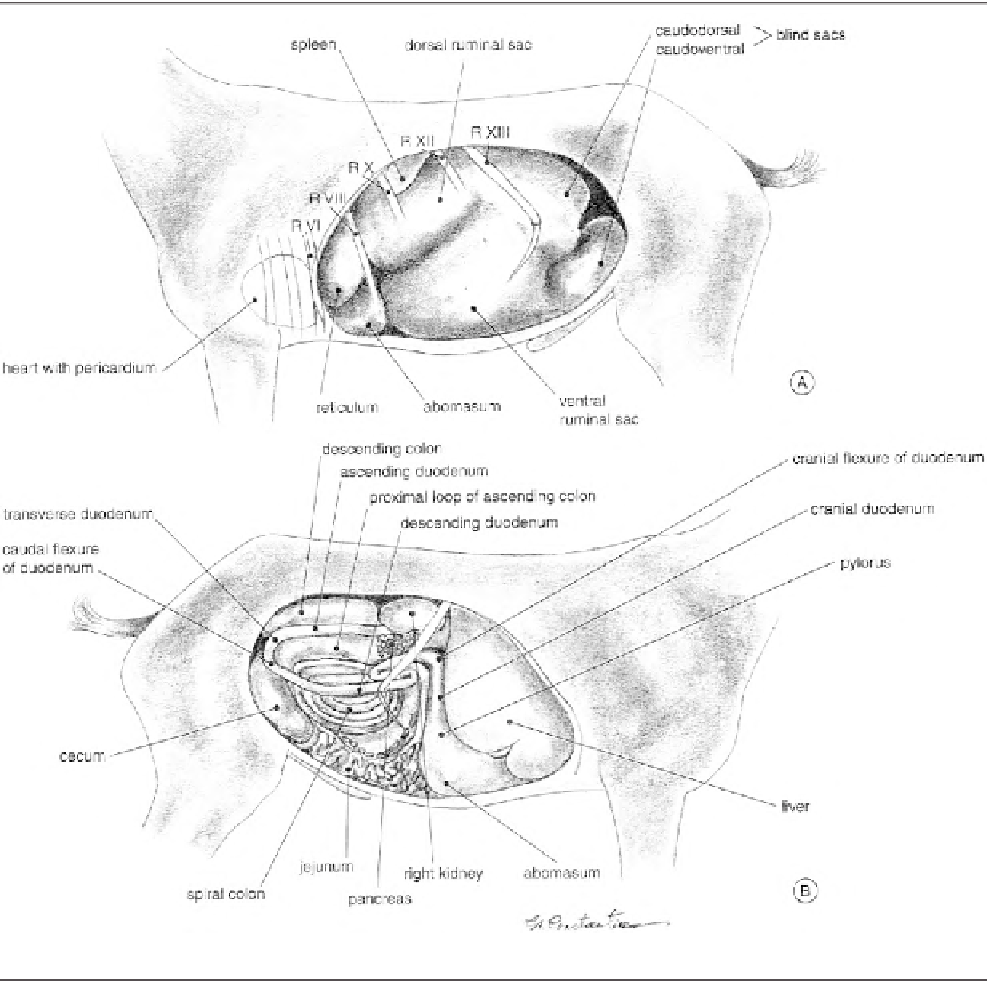Agriculture Reference
In-Depth Information
Figure 6.26
Topography of abdominal viscera: A. Left side; B. Right side.
Starting from the cardia, a
gastric groove
is formed,
running on the walls of the reticulum and omasum, and
ending in the abomasum. A certain amount of already-
shredded forage is pushed back from the reticulum into the
oral cavity by an antiperistaltic wave of the esophagus,
is remasticated, reinsalivated, and redeglutited as the
mericic bolus. Peristaltic versus antiperistaltic waves will
be explained in Chapter 8. This bolus bypasses the rumen,
drops into the reticulum through the gastric groove, then
passes into the omasum to be squeezed of water as much
as possible. This is the role of the muscles and confi gura-
tion of mucosal folds of the reticulum and omasum. Mixed
with as little water as possible, the bolus passes into the
abomasum and is submitted to a chemical digestion process.
In suckling youngsters, the gastric groove is transformed
into a gastric duct, which allows the milk to pass from the
esophagus into the abomasum, the only compartment of
the stomach capable of digesting milk. The normal func-
tioning of the gastric groove is as important in adulthood
as it is for the suckling kids (baby goats).






